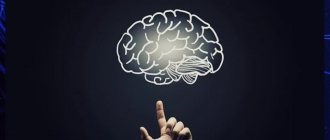Personal motives in psychology are a certain internal force of a person that motivates him to action, which is important for achieving the goal that the individual has determined for himself. In the scientific world, the definition of personal motives is very diverse. Some researchers believe that these are ideas, as well as a representation of a person, others call them the motives of a person’s thoughts and attitudes, which he adheres to, guided by them in life. Many people often know the feeling of wanting to move mountains and satisfy their need. This feeling and experience gives the individual strength, as well as self-confidence, which encourages the person to form and grow as a personality. Strictly speaking, this experience is the motive of the individual.
Personality motive is a very important attribute in the life of an individual. It is the motives that determine what heights a person will reach. In career growth, employees' aspirations acquire special properties, so management often tries to create external motives. External motives include salary increases or bonuses, sometimes it’s just praise, etc. These things motivate a person to show interest and exert more effort in order to receive external rewards and perform better as a result.
But it is worth noting that internal motives are much stronger than external ones. If an individual, so to speak, is fired up from within with a certain goal and certainly wants to achieve it, then he can overcome all obstacles, since he does it for himself.
Personal motives
Personal motives are the need (or system of needs) of the individual in the function of motivation. Internal mental motivations for activity and behavior are determined by the actualization of certain needs of the individual. The material is published at https://zachetka.rf Activity motives can be very different:
· organic - aimed at satisfying the natural needs of the body and are associated with the growth, self-preservation and development of the body;
· functional - satisfied through various cultural forms of activity, for example playing sports;
· material - encourage a person to engage in activities aimed at creating household items, various things and tools;
· social - give rise to various types of activities aimed at taking a certain place in society, gaining recognition and respect;
· spiritual - they form the basis of those activities that are associated with human self-improvement.
Organic and functional motives together constitute the motivation for the behavior and activity of an individual in certain circumstances and can not only influence, but change each other.
Human needs will appear in specific forms. People may perceive their needs differently. The material was published on https://zachetka.rf Taking into account the dependence on ϶ᴛᴏgo, motives are divided into emotional ones - desires, desires, inclinations, etc. and rational - aspirations, interests, ideals, beliefs.
There are two groups of interconnected motives of life, behavior and activity of an individual:
· generalized, the content of which expresses the subject of needs and specifically the direction of the individual’s aspirations. The material was published on https://zachetka.rf The strength of this motive is determined by the significance for a person of the subject of his needs;
· instrumental - motives for choosing ways, means, methods of achieving or realizing a goal, conditioned not only by the need state of the individual, but also by his preparedness, the availability of opportunities to successfully act to realize his goals in given conditions.
There are other approaches to classifying motives. For example, according to the degree of social significance, motives of a broad social plan (ideological, ethnic, professional, religious, etc.), group plan and individual-personal nature are distinguished. There are also motives for achieving goals, avoiding failures, motives for approval, and affiliative ones (cooperation, partnership, love).
Motives not only encourage a person to act, but also give his actions and actions a personal, subjective meaning.
In practice, it is important to take into account that people, performing actions that are identical in form and objective results, are often guided by different, sometimes opposing motives, and attach different personal meaning to their behavior and actions. In light of this, the assessment of actions should be different: both moral and legal
Didn't find what you were looking for? Use the search:
Best sayings:
Once in a class, one teacher said, when the lecture was ending - it was the end of the class: “Something smells like the end here.”
8251 —
185.189.13.12 studopedia.ru Not the author of the materials posted. But it provides free use. Is there a copyright violation? Write to us | Feedback.
Types of Human Motivation
Such types of motivation as “carrot” and “stick” are widely known. This is nothing more than an idea of negative and positive motives. These principles have long been used in economics, politics, management, education and other areas, including everyday life.
It is interesting that these types of motivations can characterize not only an individual, but also a certain society. It is known, for example, that since ancient times the Russian consciousness has been more characterized by “stick” motivation than “carrot” motivation. This is even reflected in the proverbs: “Until thunder strikes, a man will not cross himself.” A similar character of the Russian person was noted by researchers of culture and even religion. Thus, one church historian said that Russian Orthodox people have long believed not so much in God as in the devil, and in Russian religious (and for the most part folk-religious) culture, thousands of ways and advice have arisen on how to avoid meeting with evil spirits; at the same time, original Orthodoxy condemns such a practice, because if a person believes in “an all-powerful God,” then he should not be afraid of evil spirits.
“Gingerbread” is largely a Western system of motifs. Thus, in European countries there are a number of incentives for citizens who strictly comply with the law, and a relatively mild system of punishments for those who violate the laws. In our country, the opposite is true: practically nothing is provided for law-abiding citizens, but the system of punishments is extensive, confusing, cruel and clumsy.
However, in modern Western society the role of the “stick” in certain areas is also growing. There, cruel treatment of children and violation of discipline in enterprises are severely condemned. The existing problems, say, in public health care in themselves are a “stick” for Europeans, encouraging them to work hard to pay for private medical services.
Which of these motives are most effective? Each country and each people has its own answer to this question. History shows that European society was favorably influenced by the widespread increase in the “carrot”, that is, the development of positive motives; but opposite trends led to revolutions, strikes, spontaneous and organized mass protests. This has been evident in European history for centuries.
In modern Singapore, the “whip” played a key role in the prosperity of society. There are a great many restrictions and prohibitions in this city-state, and in order to maintain impeccable order, punishments such as caning are widely used. There are no “carrots” for citizens here. And it seems strange to many of us how such methods have led Singapore to an economic and social miracle, high standards of living, social cohesion (and this in a multi-ethnic and multi-cultural country with a high population density) and the absence of mass discontent.
The countries of Eastern Europe, the USA, and China stand out in that their societies maintain a certain balance of incentives. For Eastern Europe, this was especially noticeable during the years of the Soviet bloc: citizens loyal to the state regime, who worked conscientiously and cared about their high “moral character” (from the point of view of the authorities), were guaranteed a fairly high standard of living, a certain degree of civil liberties, provision of consumer goods. And next to this is the brutal persecution of dissidents, dissidents, “parasites,” and the condemnation of an immoral way of life, elevated to ideology. Something similar could be seen in these countries both before and after the “Soviet era.” Only people who were characterized by a struggle between opposing systems of motives could build such a society. To compare this with the Western European system, just look at the prisons in these countries: Norwegian or Dutch ones are more reminiscent of resort hotels, and Polish or Romanian ones are more like a concentration camp.
This makes some sense. In the cultures of different countries, the image of a prison is given the role of a kind of “scarecrow”, with the help of which some people try to motivate others, thereby controlling their behavior. In Russia, the USA, China and the countries of Eastern Europe, a prison is not a correctional institution, but an “institution for the execution of punishments,” and its task is to oppress and destroy the individual, to destroy the criminal morally and often physically. And only the desire not to “slide” to the point of ending up behind bars gives the average person in these countries the impetus to perform socially useful actions (work, provide for their family, respect others, do not steal, do not kill, etc.). The first opportunity to avoid a prison sentence motivates a typical resident of these countries to commit a crime.
The behavior of Europeans is subject to different principles. Apparently, a prison term does not frighten them: after all, the existing restrictions in the prisons there do not humiliate the prisoner as an individual, the prison staff show him a certain respect. But at the same time, the discipline of Europeans, their politeness, and desire to work hard (but not overwork) is amazing. If you leave a wallet with money on a bench in some German city, then, most likely, a week later you will find it there completely untouched (currently the situation is much different due to the abundance of migrants in Germany and other European countries who have completely different psyche). The reason is that the average European is determined to achieve success and maintain his good reputation, and any “wrong” action can ruin this reputation. You won’t go to jail, but your friends will turn away from you, your girlfriend will stop loving you, your parents will kick you out of the house, you won’t be hired by a good organization...
If you delve into history, you can see what motivated people in different countries, creating similar inventions, performing the same actions. A good example is the creation of a printing press. Johannes Gutenberg was definitely positively motivated: with the help of his printing house, he wanted to improve his financial condition, gain fame and influence, become a pioneer of something new, and give people new opportunities for development. He was the creator, chief worker and owner of his enterprise. In fact, he succeeded in his plans: not only merchants and artisans, but also royalty and the church became his clients.
The Russian pioneer printer Ivan Fedorov was motivated by slightly different considerations. For him, his work was rather ritual; he wanted to “serve God.” The visible analogues of “god” for him were rulers, church hierarchs, and boyars. In the first Moscow printing house, opened by the Tsar and Metropolitan for personal needs, Fedorov was a powerless worker, and he did not want to have any personal benefits from this enterprise. For a long time, the pioneer printer was driven by circumstances that did not allow him to fully implement his plans: ordinary priests and book copyists were angry with him, the printing house was quickly burned and forced him to flee the country to Lithuania, and then to Ukraine. Outside Russia, the pioneer printer's business went much better, but again at the expense of strong rulers. The Russian pioneer printer never acquired his own personal printing house. Apparently, the Christian god and government officials were for Fedorov a kind of “whip” that should be feared and served.
“The Man in the Case” is another character, now literary, who was clearly motivated solely by the “whip”. His favorite saying was the expression “no matter what happens,” which he repeated whenever he saw something unusual. Those around him were surprised where this petty official, a quiet and inconspicuous man, suddenly awakened with remarkable energy, with which he began to scribble complaints left and right. All-encompassing fear prompted him to act, while those around him were motivated in their actions by positive considerations.
Forms of personality orientation
The basis of all forms of personality orientation are the motives of activity.
Wish
Desire as a form of orientation is characterized by awareness not only of one’s need, but also of possible ways to satisfy it.
Interest
Subjectively, interest is revealed in the emotional tone that accompanies the process of cognition or attention to a certain object. One of the most significant characteristics of interest is that once it is satisfied, it does not fade away.
As a rule, interest develops, evolves, and gives rise to new interests corresponding to a higher level of cognitive activity.
Interest is the most important motivating force for understanding the surrounding reality. There are:
- immediate interest caused by the visual attractiveness of the object,
- indirect interest in the object as a means of achieving the goals of the activity.
Stability, breadth, and content of interests are the most important personality traits, one of the cornerstones of a person’s personality. Having spoken about a person’s interests, we thereby draw a fairly accurate psychological portrait of him.
Addiction
In many ways, interest develops into inclination due to the inclusion of a volitional component. Inclination is an individual’s orientation towards a certain activity. The basis of the inclination is the deep, stable need of the individual for a particular activity.
In a sense, we can say that inclination is an interest in an activity.
.
Interest and inclinations are a factor in the rapid development of an individual’s abilities.
Worldview
Worldview allows a person to plan his activities for many years to come: he knows that a lot can change over the years, but the basic laws by which the world exists will remain unshakable.
Conflict in the system of motives
It would be very easy to live if the system of motives had a strictly defined hierarchy and obeyed certain rules that you could consciously regulate.
But taking into account the fact that drives, attitudes, and some needs are formed and influence you unconsciously, it is difficult to establish conscious control over the motivational sphere. Moreover, at every moment of time the leading impulses that motivate you to activity change.
You were just getting ready to go to work, when you suddenly remembered that you haven’t talked to your friend yet, you forgot to ask how she went to the restaurant yesterday. And so, instead of giving in to the steady, stable, conscious urge to work, you chat and gossip, and then regret the wasted time.
To avoid such conflicts, it is recommended to clearly plan your day, taking into account the motives, needs, goals, interests that are of utmost relevance at the moment. At the same time, it is important to reduce the influence of attitudes and unconscious drives - to do this, live consciously.
The influence of orientation on motivation of activity
Intrinsic and extrinsic motivation
Depending on a person’s inclinations, his worldview and other forms of orientation, he may be more prone to internal motivation or to external motivation.
Awareness-unconsciousness of motives
- conscious,
- unconscious.
People with developed ideals, worldviews, and adequate beliefs, as a rule, are driven by conscious motives in their actions. The confusion of the inner world and the abundance of psychological defenses can lead to the fact that the main drivers are unconscious motives.
Quantity and quality of needs, interests, inclinations
Social needs:
- a person’s desire to live in society,
- desire to interact with other people,
- the desire to benefit people, to participate in the division of labor,
- the desire to understand other people and social processes.
The more qualitatively different needs, interests, and inclinations a person has, the more versatile and flexible his activities. A purely human quality is the ability to combine several different interests in one’s activities.
What have we learned?
Activity is human activity aimed at transforming reality to satisfy needs. Its structure is studied in 8th grade. Actions are based on motives - desires, motivations, needs, beliefs, attitudes.
Previous
Social studies Moral choice and moral responsibility - what is it, a brief definition for preparing a message (grade 8)
Next
Social studies The spiritual sphere of society: what is it, what does culture include, areas, structure and branches in brief on social science











